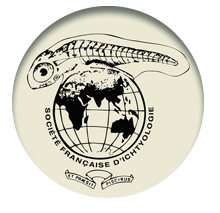Fish-habitat relationships in French Guiana rivers: a review
How to cite: de Mérona, B., Tejerina-Garro, F. L., & Vigouroux, R. (2012). Fish-habitat relationships in French Guiana rivers: a review. Cybium, 36(1): 7-15. https://doi.org/10.26028/CYBIUM/2012-361-002
The role of habitat at different spatiotemporal scales in structuring fish communities is nowadays universally recognized. French Guiana, with a dense hydrographic network and high fish species richness, constitutes an adapted field to test some hypotheses about fish-habitat relationships. This paper aims at synthesizing the actual knowledge on the environmental variables determinant in structuring fish communities in French Guiana rivers. Historical factors linked to the alternation of glacial and inter-glacial episodes explain the peculiar distribution of fish species in an East-West gradient. The number of fish species in the basins matches the general relationship between basin area and fish richness observed in other Amazonian rivers. The zonation of fish species along the course of rivers is poorly marked with only two zones identified, excluding the headwaters which are largely unknown. At the reach scale creeks and pools house distinct fish communities but no fish species is exclusive of the rapid habitat. In the creeks as well as in the pools many statistical relationships have been found between environmental variables and the presence and/or abundance of individual fish species. Gold mining and the presence of a dam are the main human activities that influence fish communities’ structure through modification of the aquatic environment.


